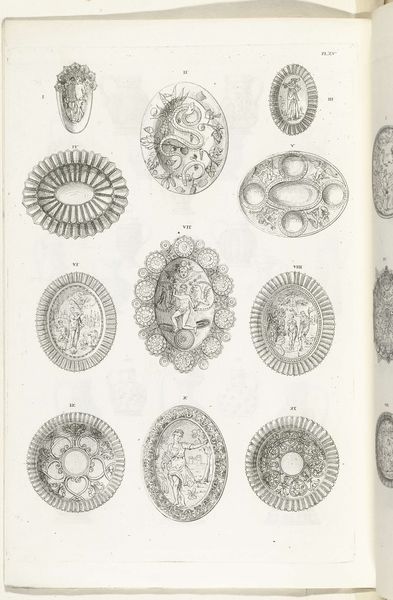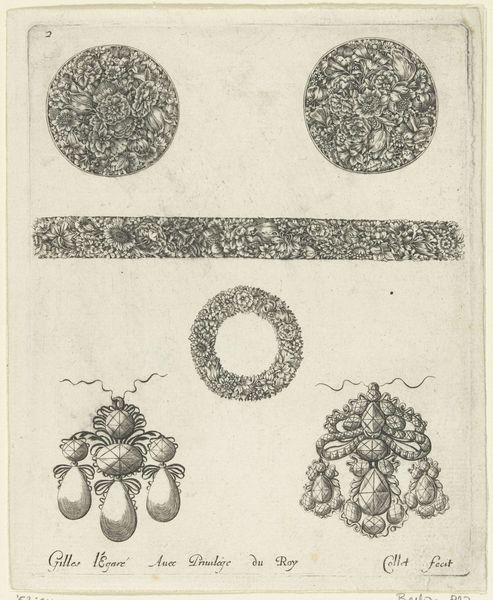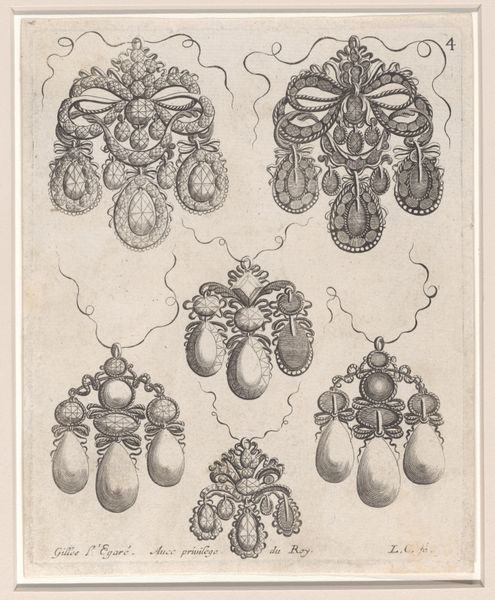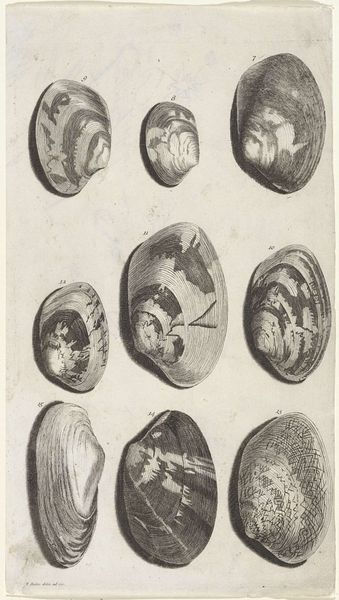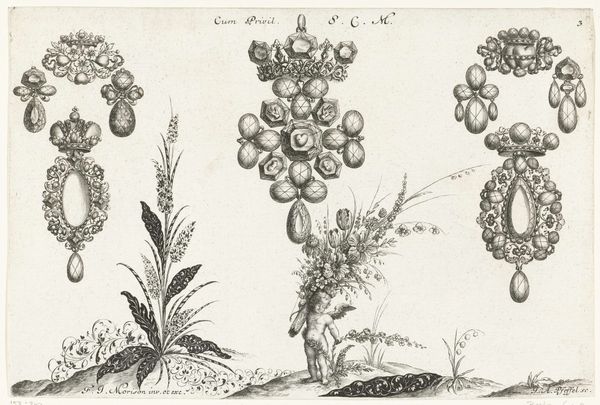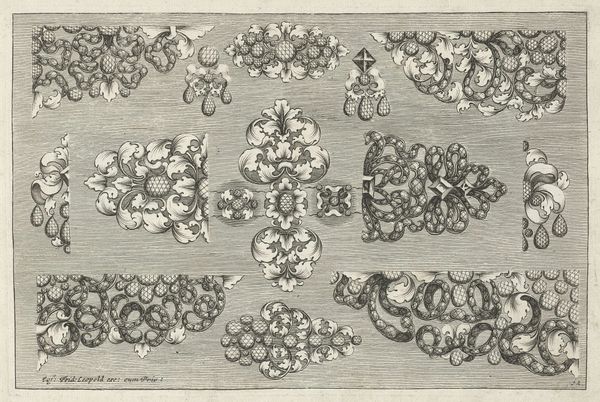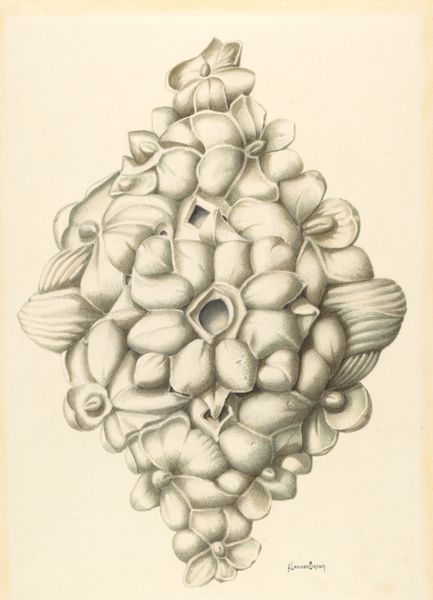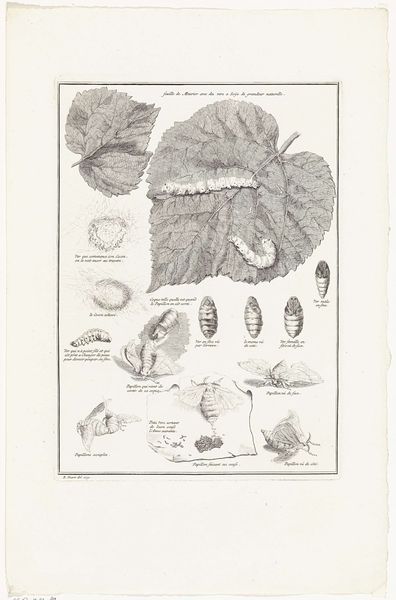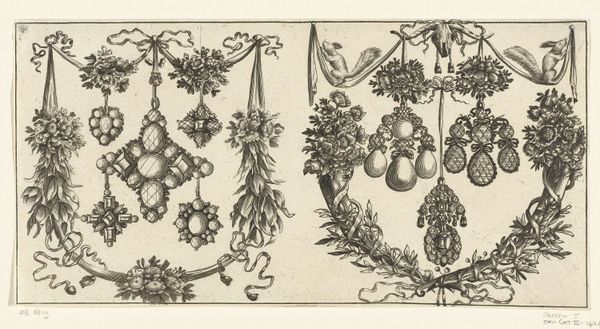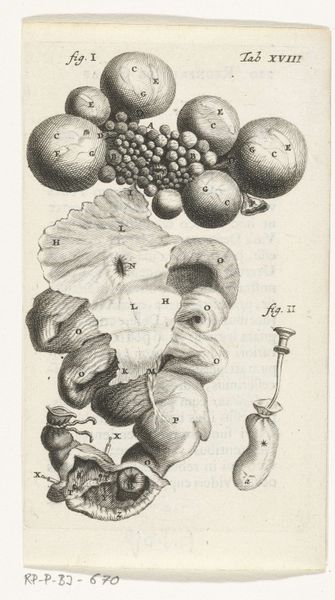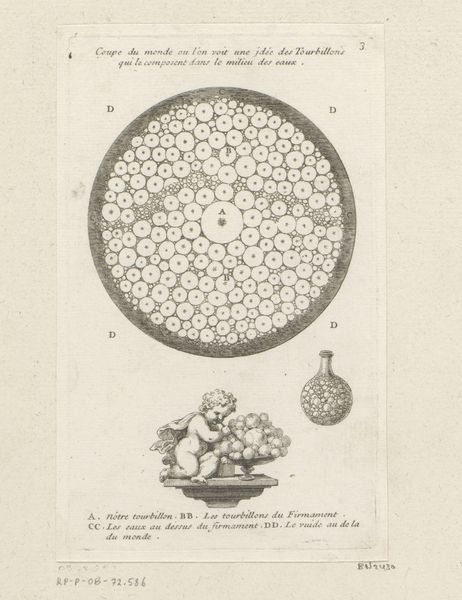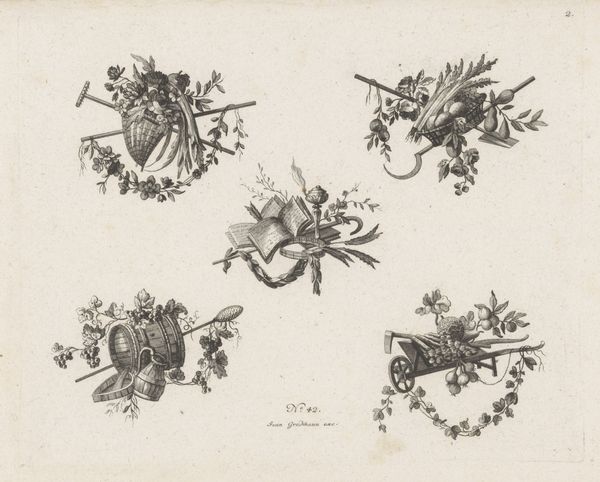
drawing, graphic-art, ornament, print, engraving
#
drawing
#
graphic-art
#
comic strip sketch
#
ornament
#
light pencil work
#
baroque
# print
#
pen sketch
#
old engraving style
#
personal sketchbook
#
sketchwork
#
pen-ink sketch
#
pen work
#
sketchbook drawing
#
sketchbook art
#
engraving
Dimensions: height 153 mm, width 120 mm
Copyright: Rijks Museum: Open Domain
Editor: This engraving from 1663 by Louis Cossin, titled "Eight Front and Back Views of Pendants," has such a delicate feel. It reminds me of looking at someone's personal sketchbook page. What stands out to you about this piece? Curator: Well, firstly, these aren't just ornaments; they're potent signifiers of status and power in 17th-century Europe. Consider the social and economic landscape of the time: who wore these pendants? What did their ownership signify about gender roles, access to global trade routes, or inherited wealth? We need to think critically about how objects like these were both instruments of beauty *and* tools of social stratification. Editor: So, beyond just being pretty jewelry designs, they reflect a larger system? Curator: Precisely. Look at the repetitive nature of the designs themselves. Does it suggest a standardization of beauty? The artist is part of that cultural machine – reinforcing those ideas. How did Cossin’s work contribute to upholding, or perhaps subtly challenging, the social hierarchy of the era? Editor: I hadn’t thought about the potential for the artist to subtly challenge norms through design. Curator: Art always exists within a power structure. Considering these sketches as part of that structure provides richer understanding, don't you think? Editor: Definitely. I'll look at design history very differently now. Thanks for your insight! Curator: It's all about context and how power informs creation, a constant interplay!
Comments
No comments
Be the first to comment and join the conversation on the ultimate creative platform.
